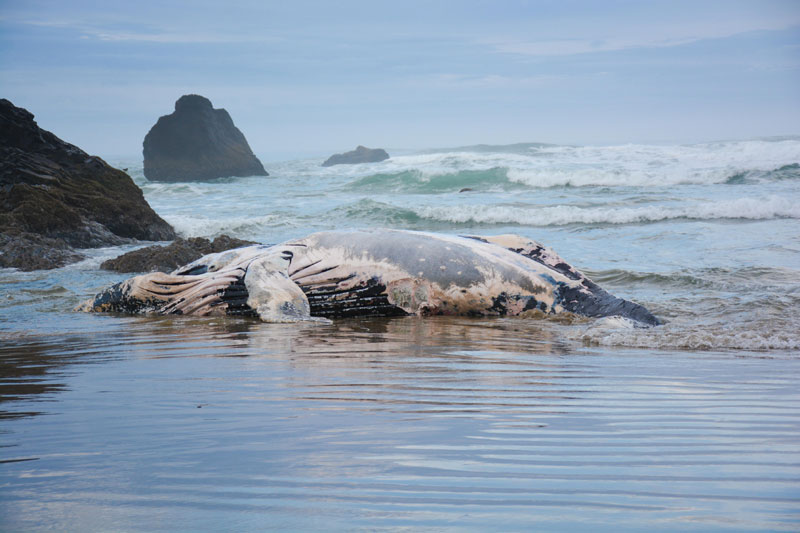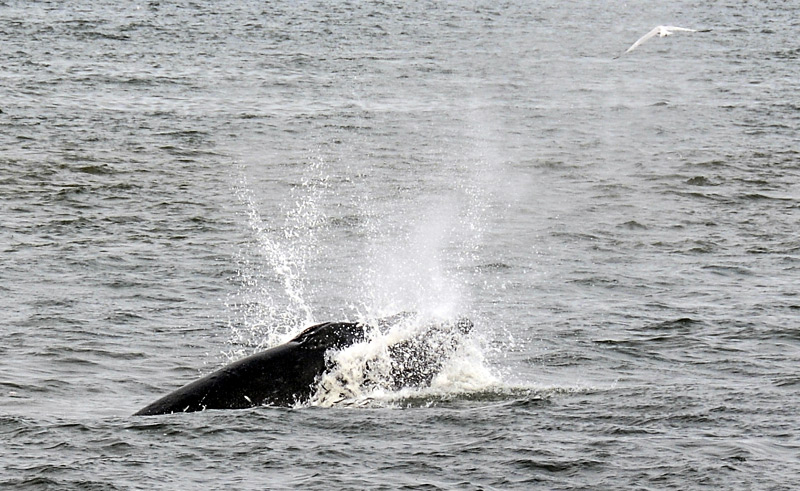Deceased and Decayed Humpback Whale Washes Up on North Oregon Coast
Published 12/22/21 at 12:22 AM PST
By Oregon Coast Beach Connection staff

Includes exclusive listings; some specials in winter
In Cannon Beach:
Includes rentals not listed anywhere else
In Manzanita, Wheeler, Rockaway Beach:
Some specials for winter
In Pacific City, Oceanside:
Some specials for winter
In Lincoln City:
Some specials for winter
In Depoe Bay, Gleneden Beach:
Some specials for winter
In Newport:
Look for some specials
In Waldport
Some specials for winter
In Yachats, Florence
Some specials for winter
Southern Oregon Coast Hotels / Lodgings
Reedsport to Brookings, places to stay; winter deals
(Cannon Beach, Oregon) – A deceased whale in a serious state of decay washed up on the north Oregon coast Tuesday, providing local scientists with some things to work with but not as much as usual. The humpback whale came ashore at Silver Point, a rather secret spot just south of Cannon Beach. (Photos courtesy Tiffany Boothe, Seaside Aquarium)
Crews from Seaside Aquarium responded to the scene, taking photos but able to do little else. The aquarium is part of the Marine Mammal Stranding Network, dealing with deceased or stranded animals such as this along the north Oregon coast and southern Washington coast.
The aquarium's Tiffany Boothe said little else is known about the humpback, but they will be back soon to learn more.

“This small humpback has been dead for quite some time,” Boothe said. “Due to the whale's condition and location it is unlikely that a necropsy will be performed. We will be returning to take standard measurements in the next few days.”
Exactly what will be done with the corpse is as yet unknown, although Oregon coast officials typically bury such whale carcasses or leave them to be picked apart by eagles, crabs, gulls and other creatures of the surf.
Boothe said the humpback stinks pretty badly, but luckily some factors are keeping that from being worse.
“It does smell but it is on the south end of Cannon Beach so there is not a lot of foot traffic,” Boothe said.
The cold conditions keep it from smelling too badly as well, she said, and even now it's providing food for scavengers of the area.
Humpbacks are rather common off the Oregon coast and Washington coast, she said, so these corpses do wash up now and then.
“We typically see a couple per year,” Boothe told Oregon Coast Beach Connection. “Since they migrate along our coastline and are one of the more abundant species of cetaceans in our area. Grays and humpbacks wash ashore more often than any other species of cetacean.”
Boothe said humpback whales belong to the baleen whale suborder and are common in the Pacific ocean as well as any other ocean around the world. They are known for breaching and their complex whale songs. They can live up to 50 years in the wild.
Whaling through the centuries, especially from the 1850s onward, resulted in a massive depletion of humpback whales in the North Pacific by the 1960s. As few as 1,400 were left, Boothe said. The Marine Mammal Protection Act of 1972 along with a 1982 ban on commercial whaling allowed them and other whales a significant bounce-back.
Scientists now estimate their populations have rebounded to at least 18,000.

Humpbacks are known for making stellar appearances on the north Oregon coast in the middle of the year.
“During the summer months some Humpbacks stop and feed along the Oregon coast,” Boothe told Oregon Coast Beach Connection in 2019. “They tend to stay five to fifteen miles offshore, but they will also go where the food is. September is the best time to see Humpbacks (especially from shore). This is because typically the weather is nicer and the ocean is calm.” MORE PHOTOS BELOW
Hotels in Cannon Beach - Where to eat - Cannon Beach Maps and Virtual Tours
Cannon Beach Lodging
Nehalem Bay Lodgings
Manzanita Hotels, Lodging
Three Capes Lodging
Pacific City Hotels, Lodging
Lincoln City Lodging
Depoe Bay Lodging
Newport Lodging
Waldport Lodging
Yachats Lodging
Oregon Coast Vacation Rentals
Oregon Coast Lodging Specials

Below: humpback frolicking in the Columbia one summer, courtesy Seaside Aquarium

More About Oregon Coast hotels, lodging.....
More About Oregon Coast Restaurants, Dining.....
LATEST Related Oregon Coast Articles
Through 2 a.m. likely best, but some lights possible through dawn June 1 - 2. Space weather, astronomy
Rare Sperm Whale Stranding on N. Oregon Coast, Was Hit by Boat
Showing up near Gearhart, it will decompose naturally. Marine sciences
Coast Guard Barque 'America's Tall Ship' Coming to Portland Rose Fest, N. Ore...
Portland events: June 5 - 8; Astoria events June 13 - 15. Weather
Bright and Active Arietids Meteors May Hit Pre-Dawn Hours of Oregon, Washingt...
Look to east hour before sunrise and you may catch a show. Sciences, astronomy, weather
Why Now Could Be a Great Week for Spotting Killer Whales on Oregon Coast - Video
A good dozen documentations around Depoe Bay, Newport, Coos Bay, Bandon, Tillamook. Marine sciences
Summer Road Work, Traffic Issues Along Oregon Coast Include Astoria, Garibald...
Some daylight closures include bridges, OR 22, OR 18, OR 26, more. Travel tips. Seaside, Cannon Beach, Lincoln City. Travel tips
Pacific City Oregon Weather, 7-Day Forecasts, Live Conditions, Radar, Webcams...
Updated Constantly: Pacific City, Tierra Del Mar, Oregon Weather, Cams, Buoy Observations, Tides, Warnings - Alerts
Oregon Coast Has World's Oldest Harbor Seal, Celebrating 50 Years Soon
June 3 at Oregon Coast Aquarium in Newport. Newport events
Back to Oregon Coast
Contact Advertise on BeachConnection.net
All Content, unless otherwise attributed, copyright BeachConnection.net Unauthorized use or publication is not permitted



















































